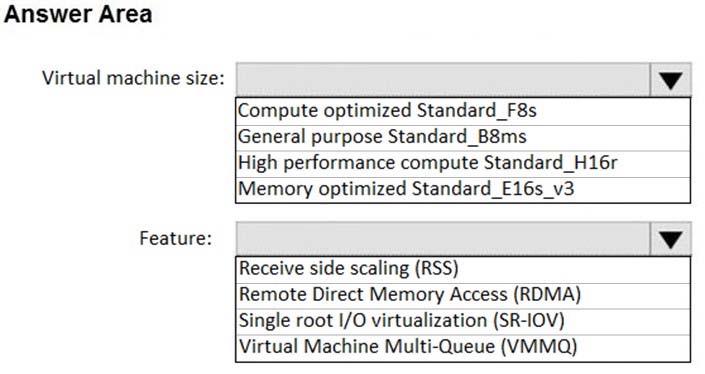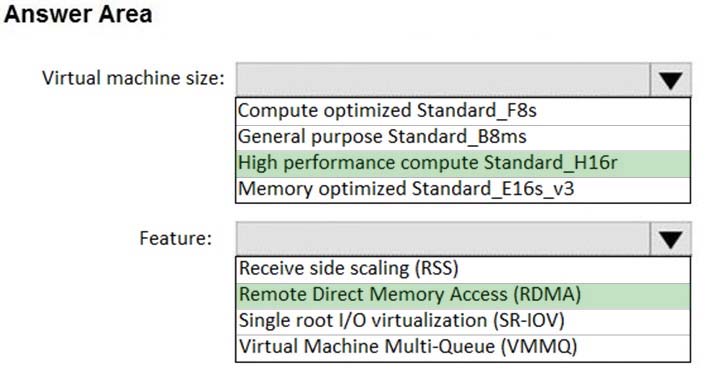

HOTSPOT -
You plan to deploy a network-intensive application to several Azure virtual machines.
You need to recommend a solution that meets the following requirements:
✑ Minimizes the use of the virtual machine processors to transfer data
✑ Minimizes network latency
Which virtual machine size and feature should you use? To answer, select the appropriate options in the answer area.
NOTE: Each correct selection is worth one point.
Hot Area:

Shiven
Highly Voted 5 years, 3 months agoyemma
5 years, 2 months agoSilentH
Highly Voted 5 years, 4 months agoCipherK
5 years, 4 months agoXJ
4 years, 10 months agoglam
Most Recent 4 years, 5 months agobruncili
3 years, 6 months agosanketshah
4 years, 7 months agoBoxMan
4 years, 9 months agoRooh
4 years, 10 months agoRooh
4 years, 11 months agoercank
4 years, 11 months agogboyega
5 years agoRafael1984
5 years agoNeetiniti
5 years agojuri
5 years, 1 month agoDeveshSolanki
5 years, 1 month agoP0d
5 years, 2 months agoVonBeanpaws
5 years, 2 months agoabcdefghijkl
5 years, 3 months agoDaren
5 years, 4 months ago